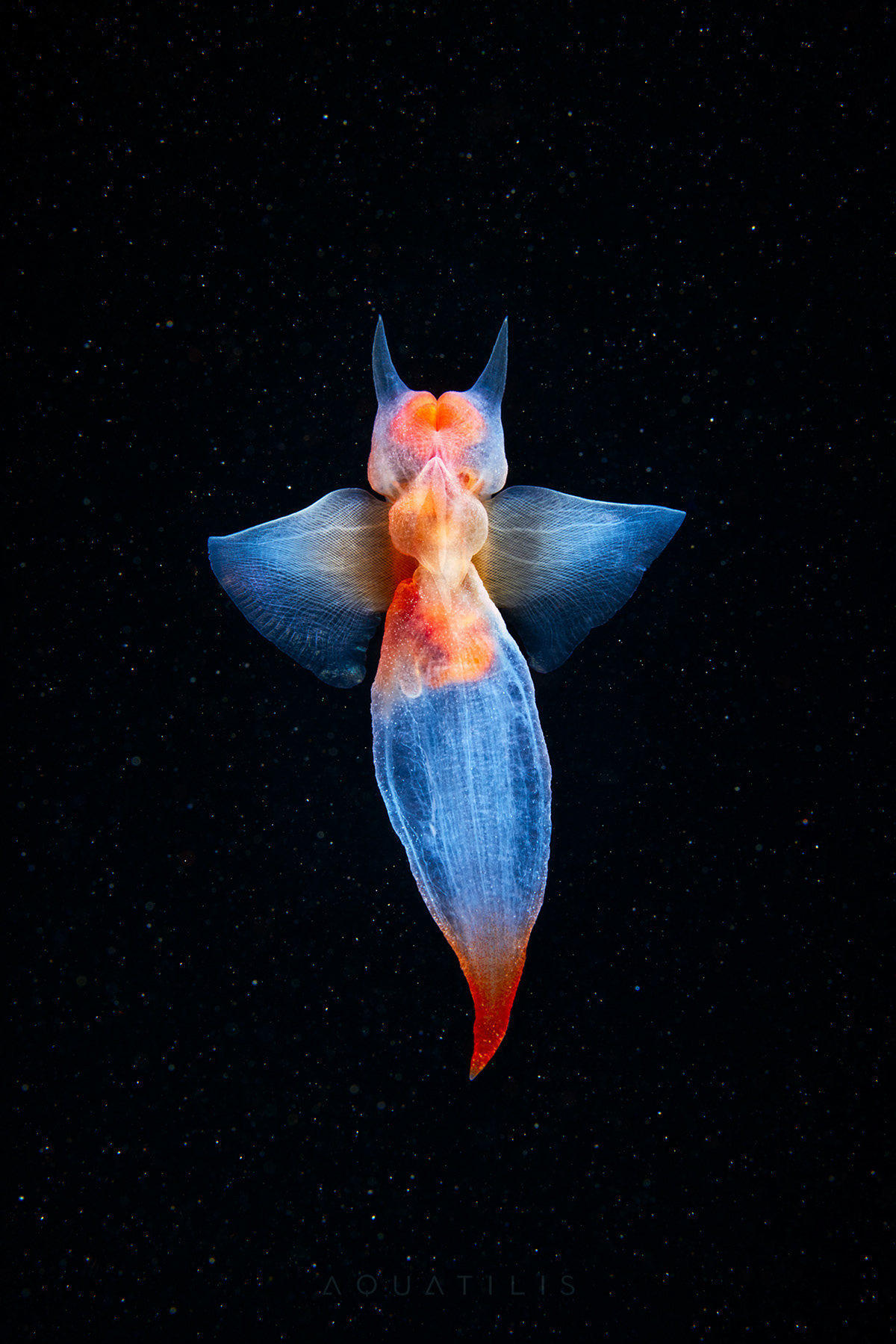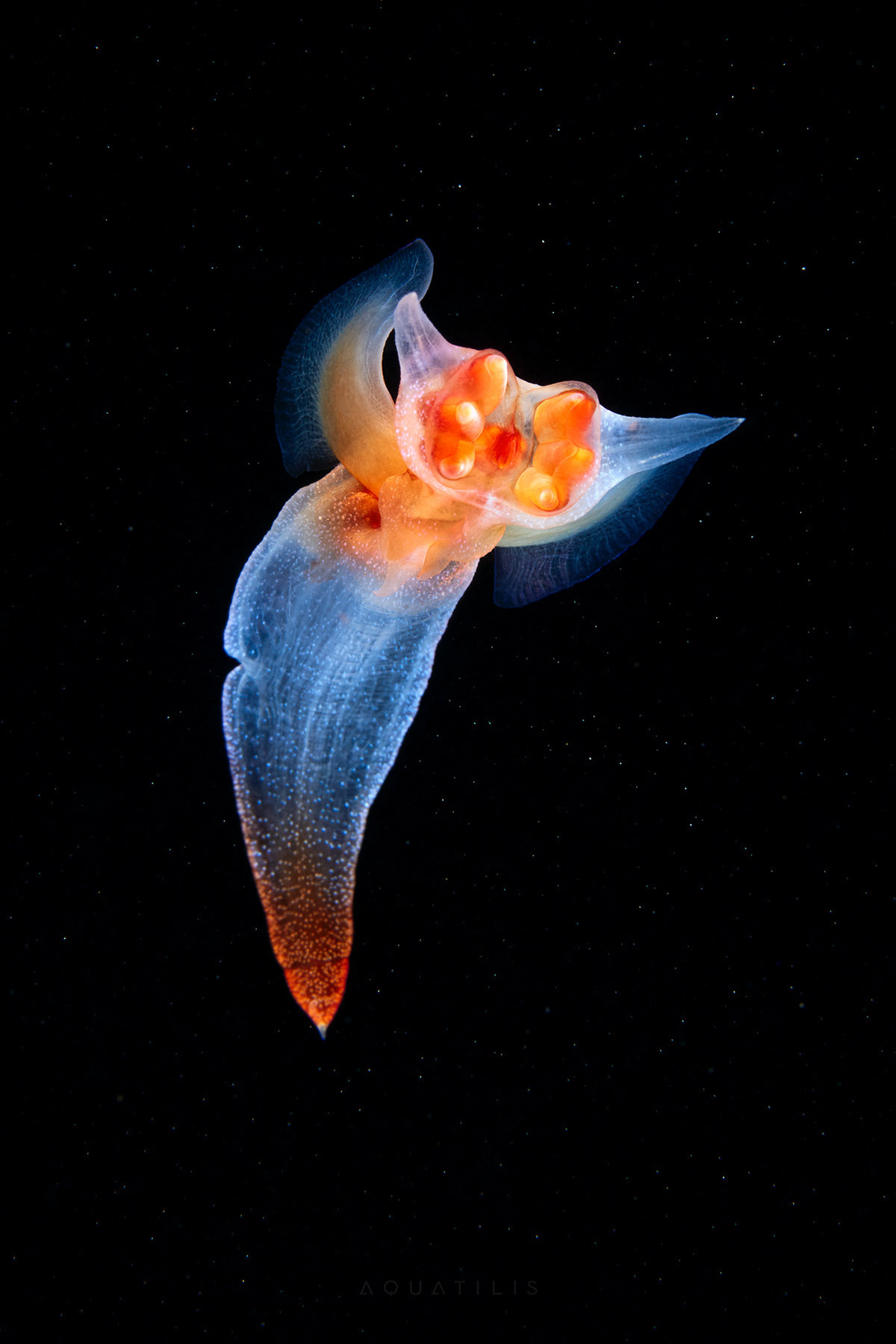Made a poster to contribute to the campaign to help get more youth into Ocean Science. The poster was selected, printed and showed at the United Nations.
Designed the poster in collaboration with Scientist and Underwater Photographer Alexander Semenov - Head of Divers’ team at Moscow State University White Sea Biological Station - The image captured by Alexander features a Clione Limacina or #SeaAngel known as the naked sea butterfly, found under surfaces of ice greater than 500m deep.
The idea was to create a visual that will resemble a poster for an exciting adventure story book or movie - like Abyss for example from James Cameron. - Through my research, I felt in love with Alexander’s pictures as they look otherworldly and they exemplify how incredibly beautiful and exciting could Marine Science be. So I decided to email him about the project and attached a sketch of the poster idea asking him to collaborate. He agreed right away, and sent me a high-res picture for me to use for my design. Through image retouching, I tried to give the original picture a graphic, almost comic book feel, increasing the cinematic effect and dramatic look through lighting effects and to give it a comic vibe.











Alexander says :
“The World Ocean is a living system of unimaginable scale: the oceans take up 71% of the surface of our planet and life is dispersed in the whole volume, not just the surface. All the exploration of the oceans, including divers, deep water robots, and manned submarines is actually nearly negligible. During the last 2000 years we have discovered a little more than 236 000 species of marine organisms, and according to scientists’ estimates, that is only 8-10% of what really lives in the oceans. This means, that somewhere in the depths there are 2-3 million species that have never been seen by human eyes. Ever. We do not even know what they might look like!”
Alexander Semenov organizes and manages all sorts of underwater work mostly on the Polar Circle. His team and him are used to diving in unfavourable and often harsh conditions, successfully conducting complex research projects. His key specialization is scientific macro photography in natural environments. This approach makes it possible to observe animals that cannot be properly studied under laboratory conditions, such as soft-bodied planktonic organisms or stationary life forms living on the seafloor.